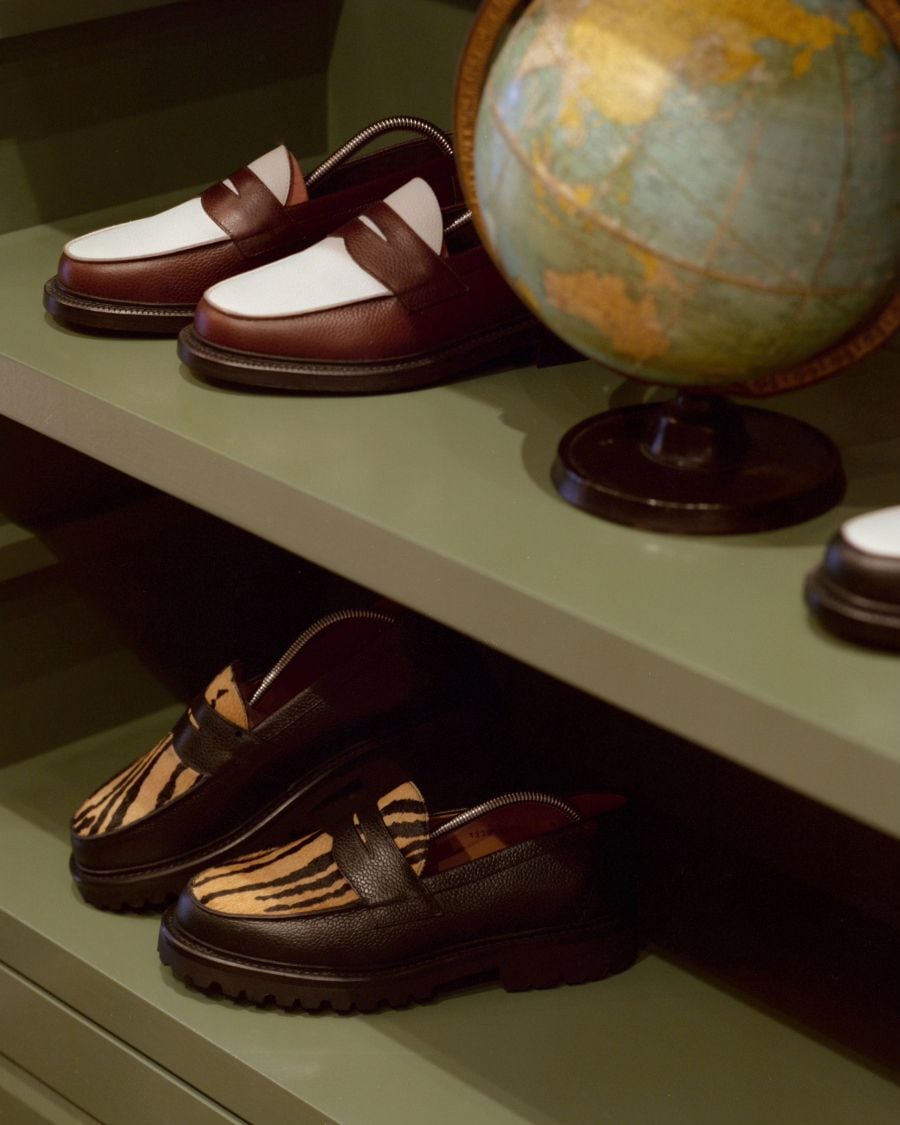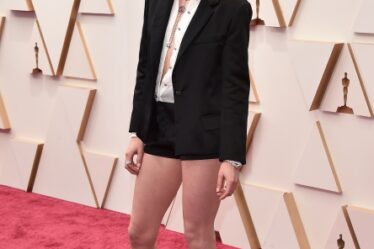
Chris Echevarria saw this moment coming.
It was 2017, and after streetwear’s years of domination, menswear consumers were wanting to dress up more. Echevarria had an idea for a shoe that bridged the gap between a Nike Air Force One and a classic penny loafer. The result, a loafer with a thicker sole and uppers in dramatic fabrics like zebra prints and embossed snakeskin, is the hero product of his shoe brand Blackstock & Weber, which he founded that year.
“I felt like people weren’t telling the story of the versatility of the loafer in the right way,” Echevarria said. “I just wanted it to feel fun. I wanted it to feel exploratory.”
Six years later, Echeverria’s bet on men’s loafers has come to fruition. Blackstock & Weber’s sales were up 300 percent year over year in 2023, and in May, Echeverria opened a retail store called 242 Mulberry in New York’s SoHo neighbourhood, where Blackstock & Weber’s wares are prominently featured alongside Oxford shirts and denim chore jackets from Echeverria’s clothing brand Academy.
Loafers are a perennial menswear staple dating back to the mid-twentieth century. But in recent years, the style has penetrated the zeitgeist among younger menswear shoppers who have graduated from graphic tees and sneakers to a preppier, dressy-casual aesthetic, pairing loafers (and other slip-on styles like boat shoes and slippers) with five-inch shorts and high socks or flared denim. Google searches for men’s loafers have increased 25 percent year over year since 2023, and there’s currently more than 12 million views for men’s loafers on TikTok, increasing at around 130,000 views per week, according to research firm Trendalytics.
“We’re living in a post-sneaker boom society,” said Chris Black, a columnist for GQ and the founder of brand consultancy Done to Death Projects, which works with companies like J.Crew and Thom Browne. “A loafer is a very approachable style for most guys … It looks good with jeans; it looks good with shorts. You can’t really mess it up.”
Younger shoppers, who can’t shell out as much as $1,800 for loafers from legacy labels Church’s or Crockett & Jones, are instead buying loafers from direct-to-consumer brands like Blackstock & Weber, as well as Swedish footwear brand Morjas, which sells $400 handmade pairs and saw its sales grow 50 percent year over year to $8 million in 2023. On June 4, it opened a five-day pop-up in New York to increase awareness in one of its biggest markets.
Even brands that don’t specialise in footwear are seeing a lift. Made-to-measure menswear label Stòffa’s slippers are driving traffic to its flagship store that opened in May. Todd Snyder — which has sold loafers and slip-ons through collaborations with brands like Alden and Sperry for the past eight years — has seen loafers go from 14 percent of footwear sales to 24 percent in the past year. This year so far, loafer sales are up 126 percent versus 2023; Todd Snyder plans to launch its first in-house loafer in 2025, said chief product officer Alejandro Rhett.
“Getting a luxury experience at a sort of contemporary price point is very appealing to a lot of people,” said Jake Woolf, a former GQ staff writer who now doles out men’s styling advice to his 230,000 followers on TikTok. “[These brands have] found a really good, sweet spot where they’re offering a style that people want [and] they’re offering a quality that people are intrigued by.”
The upstarts are marking the loafers’ current success with unique design — Blackstock & Weber with its chunky soles and funky uppers; Morjas with its Swedish minimalism; and Stoffa with its slippers. They’re also tapping into the zeitgeist with buzzy collaborations, and adding in complementary categories to drive longer term brand building.
Meeting the Moment
In the early 2010s, fashion-obsessed men were fixated on Italian tailoring and styles like double monk strap shoes were a status symbol.
But today’s loafer shoppers aren’t limiting themselves to traditional options. Silhouettes that challenge gender norms, such as Bode’s house shoe, Lemaire’s flat-piped slippers and Margiela’s Mary Jane Tabi loafers, are dominant as well.
“Loafers have become just like another template for however you want to see your way through this thing we call style, or just a canvas for designers to sort of riff on it in a million different ways,” Woolf said.
Stòffa’s $600 slippers — made with vegetable tanned calfskin attached to a natural latex sole that moulds to the wearer’s foot — are meant to encapsulate a softness that appeals to modern male shoppers. The slippers, and an offshoot with an open lacing detail, account for 70 percent of shoe sales.
“Guys have gotten much more adventurous and open in terms of how they dress,” said Nicholas Ragosta, Stòffa’s co-founder, adding that they are more “willing to wear slip-on or open shoes.”
Brands are also putting their spin on other popular slip-on staples like the boat shoe, and bringing in collaborators that resonate with the plugged-in menswear consumer.
In June, Morjas partnered with the pop culture podcast How Long Gone — which is co-hosted by Black, along with the DJ Jason Stewart, and commands an audience of well-to-do cosmopolitan men — on a $350 boat shoe made in navy hairy suede with a black sole. The style, and collaboration, fits with Morjas’ pursuit to update classic styles while meeting the cultural moment, said Henrik Berg, Morjas’ founder and chief executive.
“We’re doing things that allow ourselves to be creative and not take ourselves too seriously,” Berg said. “That’s the kind of brand that I want to build in the long run. It’s a fine, fine balance between doing what we do and then at the same time adding some spice to it.”
Built to Last
Loafers may be coveted now, but supply may be starting to outpace demand. According to Trendalytics, the number of men’s loafers available in the market jumped 35 percent in the past year, while searches for the style grew 25 percent.
Many of the brands benefiting from “loafermania” have already begun diversifying their assortments. Morjas introduced a lace-up sneaker in canvas in May, and its hiking boots perform reliably well in the fall and winter. London-based Duke + Dexter, known for its penny loafer embellished with cheeky graphics like scorpions or cocktails on the shoe’s upper, also carries sneakers and lace-up wallabee-style boots.
Still, penny loafers are Morjas’ bestsellers, accounting for more than 20 percent of overall sales. The brand is not in a rush to reduce that share.
“We’re not planning for the downfall of the penny loafer,” Berg said.



